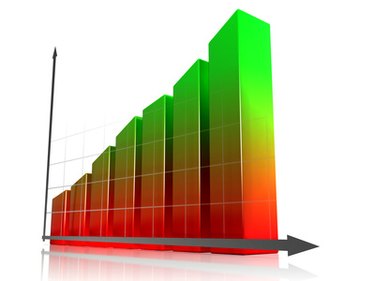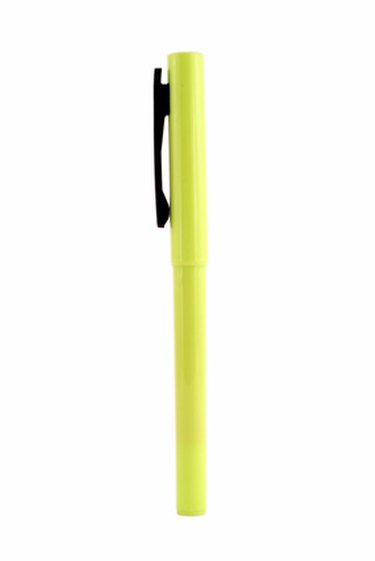
Microsoft has enabled users to create a stacked chart in Excel with little effort, through use of the charting interface. There are a variety of options available to customize the stacked chart in whatever way the user requires. There are some light variations in the method to generate a stacked chart, depending on the version of Excel. Excel 2007 and 2010 both offer the charting interface with an option for stacked charts, with the only variation being how to launch the chart interface. The most practical use of stacked charts is to display three or more data series.
Step 1
Enter the data for the stacked chart into an Excel spreadsheet. Clearly label the data in the first row so that it is easier to identify when you are making the chart.
Video of the Day
Step 2

Highlight the data you want to include in the stacked chart. Include the data labels (typically placed in the first row). You can highlight by clicking your left mouse button, holding it down, and dragging to include all pieces of data. Alternatively, to include the entire spreadsheet in the chart, press "Ctrl-A" to highlight everything.
Step 3
Open the chart interface. In Excel 2007, click the "Insert" tab, then click the down arrow under Column, and click "All Chart Types." In Excel 2010, click the "Insert" tab and click "Chart."
Step 4
Choose the chart type by clicking or scrolling to the corresponding section. The most common type of stacked chart is column, but you may also choose bar.
Step 5
Choose stacked chart style by clicking the corresponding stacked style under the chart type. Verify that the style you have chosen is stacked by hovering over it and looking for "stacked" in the tool tip description. Choose a 100 percent stacked style if you want all bars to be full and display the composition breakdown. Choose the style that most clearly displays your data and fits your taste.
Step 6
Press "OK" and verify the data.
Video of the Day